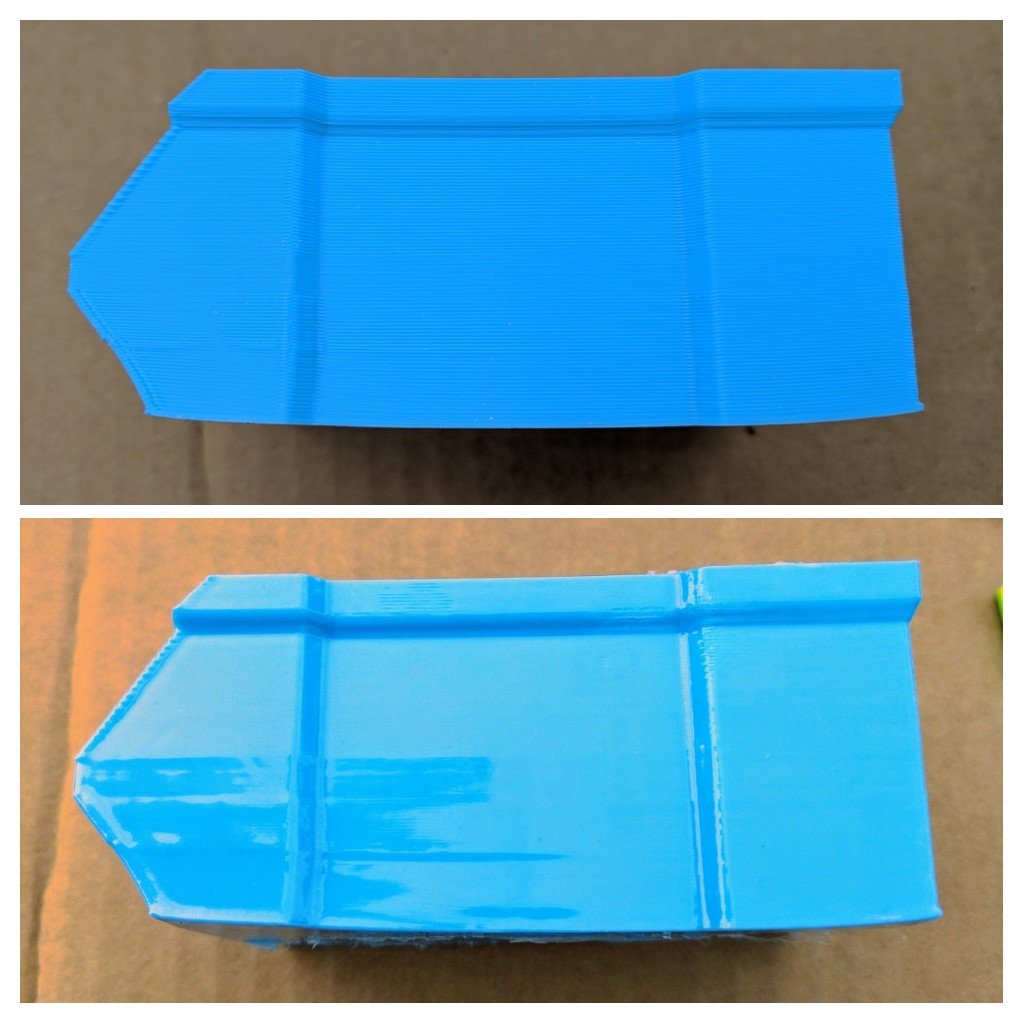I've noticed if I'm printing too close too the bed or if the bed isn't level to nozzle across the whole bed the supports will leave marks on the print where the print was 'smushed' by the nozzle being slightly closer on that side. Also, in Simplify3d you can increase the vertical and horizontal distance between the part and the support, which makes a big difference as far as cleanup, too far though and the support doesn't support. I also increase the speed of support printing, since it directly affects layer adhesion. The faster the speed the less likely to bond to the model.
I use small files for small quick imperfections, and sometimes small knives for stubborn brims. For smoothing I now use a quick acetone dip on my parts. Usually 10-30 seconds completely submerged at most. Then without touching the print (it's very mushy) place it down or hang (outside) to dry out the acetone for about two hours for every hour printed or so. You can handle small parts within 10 minutes if you dipped less than 15 seconds. The acetone evaporates over time and the abs print regains its strength completely once all the acetone is gone. This can take days if it's a big part (maybe 9" x 9") and was dipped in acetone for longer than 30 seconds. If the part smells like acetone, it's still evaporating.
Don't over dip the part in acetone, you can't go back. You don't want to lose the form of your print. You can always dip again. Forget the heat acetone method or cool acetone vapor method that takes hours. Recommend doing it OUTDOORS and perhaps a gas mask and eye protection, acetone is very thin and splashes no matter how careful you are. I tried brushing it on but the results were not very consistent. ABS floats in acetone so consider how your going to get the part submerged and then subsequently out without leaving huge finger prints. Practice on a few small prints or even scrap models and failed prints. Strangely, nobody suggests this method in forums. It's much faster and easier than the other vapor methods. The dry out time isn't fast but you don't have to watch it the whole time.
Always be safe and keep acetone away from any ignition source such as an open flame and ensure proper ventilation. 100% Acetone is used in millions of salons every day, safely. Heating acetone up in an enclosed space has severely injured people so I don't recommend adding any heat source.
Acetone evaporates in water at the same rate as not in water (open air) so I'm going to try mixing water and acetone to slow the smoothing for better control and a larger bath. Even medium sized parts need a good deal of acetone to completely submerge them. Also, you can try doing one side and recording the seconds submerged. Then when it's dried out, dip the other side the same amount of time.
Edit:
Sure! I just did two scrap pieces since you asked. It's very difficult to capture gloss. These were about 15 seconds in acetone rotating them to get even coverage in acetone since the bath wasn't large enough to fully submerge them. This method can leave blemishes but these are warped or failed prints anyway. I enhanced one picture to try to show layer detail. 


